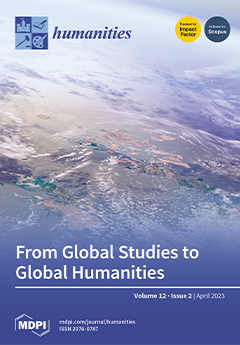Socrates’ use of performative contradiction against sophistic theories is a recurrent motif in Plato’s dialogues. In the case of Plato’s
Theaetetus and
Gorgias, Socrates attempts to show that Protagoras’
homo mensura doctrine and Gorgias’ doctrine of the power of
logos are each
[...] Read more.
Socrates’ use of performative contradiction against sophistic theories is a recurrent motif in Plato’s dialogues. In the case of Plato’s
Theaetetus and
Gorgias, Socrates attempts to show that Protagoras’
homo mensura doctrine and Gorgias’ doctrine of the power of
logos are each performatively contradicted by the underlying activity of philosophical dialogue. In the case of the
Theaetetus, Socrates’ strategy of performative contradiction hinges on Protagoras’ failure to perform in the way that he theorized the sophist performing—namely, being able to change appearances through
logoi (
Theaetetus 166d–167d). In parallel fashion, Gorgias’ account of the power of rhetoric is performatively contradicted by the orator’s inability to prevail over Socrates, instead resorting to insincere responses to Socrates’ questions in order to save face—a dialogical “performance” that ties directly to Socrates’ portrait of Gorgianic rhetoric as a matter of pandering to the audience (
Gorgias 460a–465a). Plato’s aim in dramatizing these performative contradictions, I argue, is to illuminate both the proximity between Socrates and the great sophists, particularly with respect to Socrates’ practice of
elenchos, but also the distance between Socrates and the sophists in how they conceive of our situatedness within the world of human concerns.
Full article





